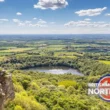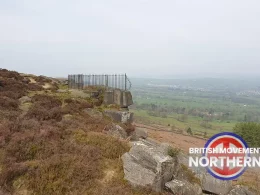The settlement of ‘Broad Ford’, which eventually came to be known as Bradford, was initially established during the Saxon era. Over time, it developed into a small town, with its focal points being Kirkgate, Westgate, and Ivegate.
The arrival in the 1950s and 1960s of Asian immigrants to work in the textile industry began to change the city’s ethnic makeup. In the 1980s, when comedians were allowed to poke fun and offend anyone without fear of being cancelled or arrested, jokes about the need to have a passport just to enter the city were a staple part of their routine.
British Movement Northern has taken a closer look at the changing face of this mill city, using data from recent Office for National Statistics Census results.
On 20th September 1914, Bradford was granted permission to form a ‘Citizens Army League’ (Pals Battalion). It was formed with its headquarters at 23 Bridge Street. The Bradford Pals (16/18 West Yorkshire Regiment) were at the heart of the assault on the Somme which took place on 1st July 1916, and was to last nearly five months. The West Yorkshire Regiment suffered the highest casualty rates of any sent into battle on the first day of the Somme.
Fast forward one hundred years, and we can see what mass immigration has done to the city during the last 60 years or so. Five out of the ten most diverse wards in West Yorkshire are in Bradford, three are in Leeds, and two are in Kirklees. The most diverse wards in Bradford are City, Bowling and Barkerend, Little Horton, Great Horton, and Heaton.
Since a question on ethnicity was added in 1991, the population of Bradford has grown to nearly 550,000 in 2021, with 30.5% describing themselves as “Asian, Asian British, or Asian Welsh”, a massive growth in proportional size. In 1991, they made up nearly 10% of the city, rising to 24.7% in 2011. Other ethnicities and mixed-race people have also increased since 2001.

The following data is taken from Historic England’s document: ‘Timeline of the migratory history of Bradford’.
1959: Pakistanis owned two grocery/butchers shops and three cafes in Bradford. Bradford’s first mosque opened on Howard Street.
1964: Bradford had a population of 12,000 Pakistanis, 5400 from Mirpur, 3000 from Chachh in Campbellpore District on the Punjab/North West Frontier Province border, 1,800 from Punjab and 1,500 from East Pakistan (from 1971 Bangladesh). In the 1960s and 1970s South Asian migrants decided that they would stay in Bradford and send their families to live with them. West Indian families also settled, around half from Dominica but also from Jamaica, Barbados and other Caribbean islands.
1966: There were 133 Pakistani businesses in Bradford, including 51 grocery/butchers shops and 16 cafes.
1970: There were 260 Pakistani businesses, including 112 grocery/butchers shops and 25 cafes. The former Jewish Orthodox Synagogue in Spring Garden was closed, and the congregation moved to Shipley.
1975: Shearbridge Road Methodist Church reopened as Shearbridge Road Mosque.
1976: On April 24th people were arrested during violence in Manningham where Asian and West Indian youths tried to stop a National Front march. It became known as “the battle of Bradford”.
1981: The former Temple Street Methodist Church re-opened as the ShahJahal Jamiah and Quaraniah Masjid.
1985-6: Mommmed Ajeeb became Bradford’s first Asian Lord Mayor. The former Elite Cinema became the Jamiyat Tabligh-Ul-Islam mosque.
1997: The Mughal Gardens were opened in Lister Park as a tribute to Bradford’s links with South Asia. The Mughals were a family of Muslims who ruled India before the British.
1999: Bradford Central Mosque (Jamiyat Tabligh-ul-Islam) was opened – the first purpose-built mosque in Bradford.
2001: Bradford`s population was 467,665. There were 85,565 people of Pakistani, Indian and Bangladeshi origin in all. Of these, 67,944 were of Pakistani origin, 12,604 were of Indian origin, and 4,967 were of Bangladeshi origin. Those of Pakistani origin made up 14.5% of the population of Bradford as a whole.
2003: The former Orthodox Jewish Synagogue in Spring Gardens opened as the Al Mumin Primary School (a private Muslim school).
2004: Four British National Party councillors were elected to the council. One of the councillors, Arthur Redfearn, was sacked from his job as a bus driver because his employers told him that it was “incompatible” for him to continue in his job with West Yorkshire Transport Services. Arthur famously took his employers to the European Court of Human Rights after he had been refused leave to take his case to the House of Lords. The ECHR ruled that he should not have been sacked for being a member of the BNP.
2017: There were around 90 mosques operating across Bradford. Checkpoint, the Bradford West Indian Centre closed.
Is this really the future that those brave young Bradfordians who volunteered to go and fight on the killing fields of France really wanted for their children and grandchildren?

Resources:
Top Image: Bradford Pals at war
Lower Image: 2011 Census
Bottom Image: 2021 Census
The British Movement welcomes articles for possible inclusion on this site from members and supporters across the North of England. Please remember that we have to operate within the laws of this country – we will not include any content that is against the current laws of the United Kingdom. News reports should be topical and relevant to the regions covered by this website.












